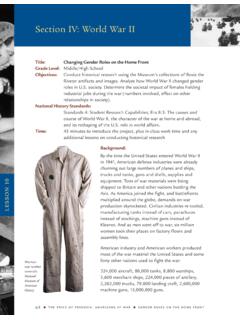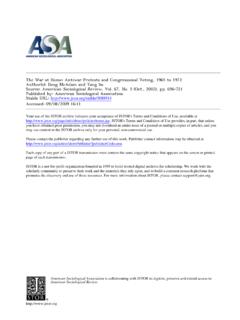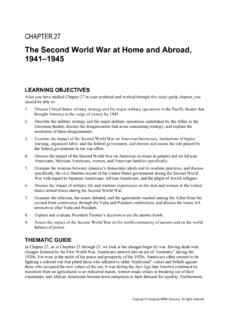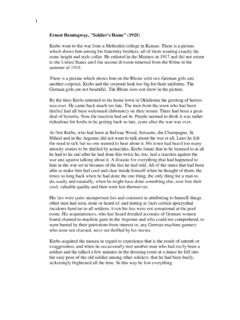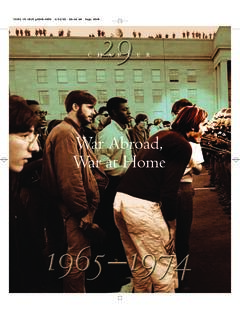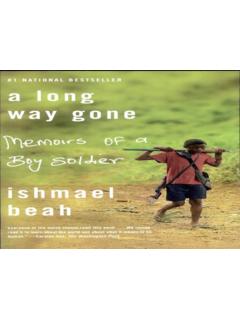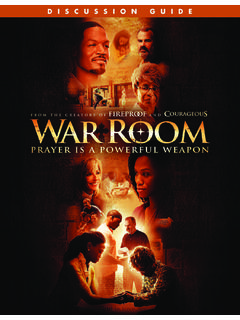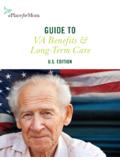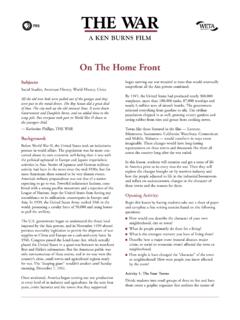Transcription of The Cold War: Containment at Home and Abroad
1 UNITED STATESHISTORYThe Cold War: Containment at home and Abroad51945-1960 Front CoverContentsFront CoverTitle pageUnit Introduction for TeachersHistory Standards Covered in this UnitUnit BibliographyLesson 1 Introduction for TeachersLesson 1 Student WorksheetsLesson 2 Introduction for TeachersLesson 2 Student WorksheetsLesson 3 Introduction for TeachersLesson 3 Student WorksheetsLesson 4 Introduction and Assessment Goals Lesson 4 Student WorksheetsAcknowledgmentsBack CoverFull-Page Image from Lesson 1 Full-Page Images from Lesson 2 Full-Page Image from Lesson 3 PLEASE SEE NOTES ON THE PDF, PAGE publication of Humanities Out There and the Santa Ana Partnership (including UCI s Center for Educational Partnerships, Santa Ana College.)
2 And the Santa Ana Unified School District).Copyright 2005 The Regents of the University of CaliforniaBy Eileen Luhr, Department of History, The University of California, IrvineTeacher Consultant, Chuck Lawhon, Century High School, Santa AnaFaculty Consultant, Vicki L. Ruiz, Professor of History and Chicano-Latino Studies, The University of California, IrvineManaging Editor, Danielle McClellanLESSONS IN US HISTORYThe publication of this CD has been made possible largely through funding from GEAR UP Santa Ana. This branch of GEAR UP has made a distinctive contribution to public school education in the by creating intellectual space within an urban school district for students who otherwise would not have access to the research, scholarship, and teaching represented by this collabora-tion between the University of California, the Santa Ana Partnership, and the Santa Ana Unified School District.
3 Additional external funding in 2004-2005 has been provided to HOT by the Bank of America Foundation, the Wells Fargo Foundation, and the Pacific Life UCI CALIFORNIA HISTORY-SOCIAL SCIENCE PROJECTThe California History-Social Science Project (CH-SSP) of the University of California, Irvine, is dedicated to working with history teachers in Orange County to develop innovative approaches to engaging students in the study of the past. Founded in 2000, the CH-SSP draws on the resources of the UCI Department of History and works closely with the UCI Department of Education. We believe that the history classroom can be a crucial arena not only for instruction in history but also for the improvement of student literacy and writing skills.
4 Working together with the teachers of Orange County, it is our goal to develop history curricula that will convince students that history OUT THEREH umanities Out There was founded in 1997 as an educational partnership between the School of Humanities at the University of California, Irvine and the Santa Ana Unified School District. HOT runs workshops in humanities classrooms in Santa Ana schools. Advanced graduate students in history and literature design curricular units in collaboration with host teachers, and conduct workshops that engage UCI undergraduates in classroom work. In the area of history, HOT works closely with the UCI History-Social Science Project in order to improve student literacy and writing skills in the history classroom, and to integrate the teaching of history, literature, and writing across the humanities.
5 The K-12 classroom becomes a laboratory for developing innovative units that adapt university materials to the real needs and interests of California schools. By involving scholars, teachers, students, and staff from several institutions in collaborative teaching and research, we aim to transform educational practices, expectations, and horizons for all SANTA ANA PARTNERSHIPThe Santa Ana Partnership was formed in 1983 as part of the Student and Teacher Educational Partnership (STEP) initiative at UC Irvine. Today it has evolved into a multi-faceted collaborative that brings institutions and organizations together in the greater Santa Ana area to advance the educational achievement of all students, and to help them enter and complete college.
6 Co-directed at UC Irvine by the Center for Educational Partnerships, the collaborative is also strongly supported by Santa Ana College, the Santa Ana Unified School District, California State University, Fullerton and a number of community based organizations. Beginning in 2003-2004, HOT has contributed to the academic mission of the Santa Ana Partnership by placing its workshops in GEAR UP schools. This unit on The Cold War: Containment at home and Abroad reflects the innovative collaboration among these institutions and COUNTS: A SPECIAL PROJECT OF THE NATIONAL ENDOWMENT FOR THE HUMANITIESThis is one in a series of publications under the series title Content Counts: Reading and Writing Across the Humanities, supported by a generous grant from the National Endowment for the Humanities.
7 Content Counts units are designed by and for educators committed to promoting a deep, content-rich and knowledge-driven literacy in language arts and social studies classrooms. The units provide examples of content reading primary and secondary sources, as well as charts, data, and visual documents designed to supplement and integrate the study of history and literature. Additional external funding in 2003-2004 has been provided to HOT by the Woodrow Wilson National Fellowship Foundation, UC Links, the Bank of America Foundation, the Wells Fargo Foundation, and the Pacific Life pageThe Cold War: Containment at home and Abroad 3 UNITED STATES HISTORY 1945-1960 The Cold War: Containment at home and AbroadINTRODUCTION FOR TEACHERS This unit introduces students to the themes of the Cold War, emphasizing the connections between political events and cultural beliefs.
8 Although the standards emphasize the leaders and major foreign policy initia-tives of the era, the Cold War affected the way that average Americans perceived themselves. During these years, public policy, political ideology, and the Ameri-can home became so intertwined that everyday practices like gro-cery shopping and familial liv-ing arrangements were infused with geo-political significance. Historian Elaine Tyler May has observed that, during these years, consumption the use of economic goods to satisfy wants became synonymous with unit will introduce stu-dents to efforts to contain com-munism at home and Abroad . Lesson 1 reviews the source of tensions between the United States and the Soviet Union in the postwar era so that students understand the origins and con-sequences of the Cold War.
9 It be-gins by asking students to draw the battle lines of the Cold War in Europe. After an introduction to the basic differences between capitalism and communism, students are asked to consider both the United States and the Soviet Union s objectives in the aftermath of World War II. Stu-dents then review excerpts of the major foreign policy initiatives of the era, including the Iron Cur-tain speech, the Truman Doc-trine, and NSC-68 and discuss what impact these policies had on American democracy. Lessons 2 and 3 introduce students to the Cold War home fronts in both the Soviet Union and the United States. By re-viewing advertising and propa-ganda, students deepen their un-derstanding of the basic tenets of capitalism and communism and gain a better understanding of the conflict between the nations.
10 Students examine state-spon-sored Soviet propaganda and American advertising campaigns to see how each nation promised prosperity. Students also read the Nixon-Khrushchev kitchen debate and learn that Cold War diplomacy extended beyond discussions of military might to include issues such as way of life. In the final lesson, students discuss whether fears about communist subversion caused (or justified) limitations on First Amendment rights in the United States. In particular, students read testimony presented to the House Un-American Activities Committee as well as files from the FBI s investigation of com-munism in Hollywood and dis-cuss whether the threat posed by the CP warranted the measures taken to suppress unit includes a writing prompt at the end of the unit (Lesson 4), though students would need supplementary information from lectures and textbooks to give satisfactory an-swers.
